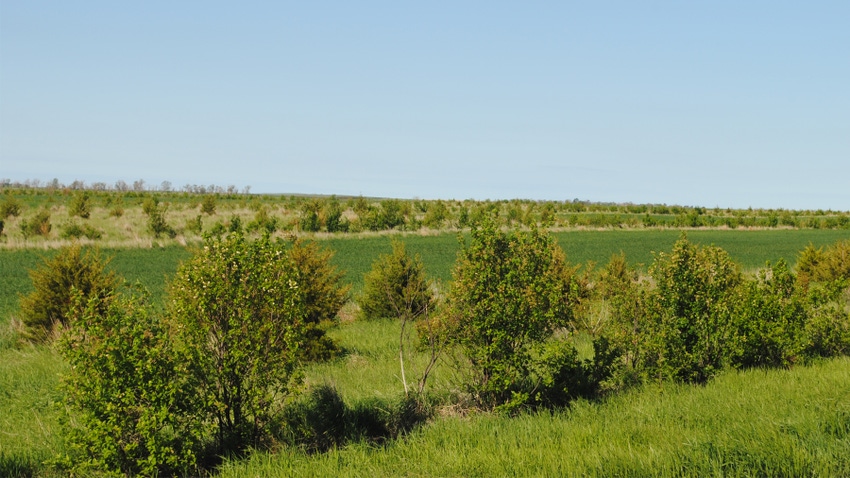
If you are planning for a new windbreak planting in the spring, now is the time to prepare. That means getting your windbreak design in place, deciding on species to be planted, getting tree seedling orders completed, and perhaps some soil and site preparation in advance.
Site preparation for spring planting may depend on the terrain, existing vegetation or crops on that site, soil type, and the potential for erosion through the winter and early spring.
Kayla Vondracek, natural resources technician for Upper Elkhorn Natural Resources District, based in O’Neill, Neb., says the first thing producers can do in the fall to prepare is to mow any existing herbaceous vegetation, grass and weeds on the planting site.
As long as daytime temperatures are still rising above 50 degrees F, any new growth that still has green leaves can be sprayed with glyphosate to terminate existing grass, rangeland, weeds or cover crops yet this fall. Herbicide treatment can be followed with tilling or disking to help roots break down in the soil, Vondracek says.
Having planted my fair share of windbreaks, I know that getting rangeland terminated completely with tillage alone can be a real challenge because of the heavy sod clumps. If glyphosate is applied while the grass is still growing, a good termination followed by tillage or plowing in the fall and disking in the spring right before tree planting makes for an optimal “garden-like” planting site, Vondracek explains.
On flat, non-erodible sites in eastern regions where moisture is not as scarce, plowing and disking — just as if you were planting row crops — would be proper treatment.
Rangeland plantings
On rangeland where moisture and erosion are more of a worry, glyphosate can be applied in the spring — at least two weeks before tree planting and when grass is growing actively.
On some western, more arid sites, landowners often employ moisture-saving methods to prepare for windbreaks, says Doak Nickerson, Nebraska Forest Service northwest district forester. This might include controlling grasses, crops and weeds with herbicides a year in advance in a 6- to 8-foot swath where trees will be planted.
Killing the vegetation and keeping it weed-free is part of a fallow process that allows dead vegetative residue to catch snowfall in the winter and add moisture to the soil before planting in the spring.
Another High Plains method includes wide scalping, Nickerson says, which is using a motor grader to remove 3 inches of soil in a swath 6 to 8 feet wide from the upwind side — followed by deep tillage or roughening of the soil one year in advance of the planting, so that “windrow” of soil left from this process catches winter snow.
Before planting in the spring, the soil windrow and dead sod is spread back over the swath where the trees will be planted.
Protect from erosion
On other rangeland sites, trees can be planted directly into dead sod that has been terminated, to avoid any chance for erosion. That said, there is more of a potential of poor tree survivability under such situations, so there may be more replanting costs involved in windbreak establishment under these circumstances.
No matter if you are planting a combination of evergreens, broadleaf trees and shrubs as many windbreaks are designed, the same considerations are made during the preparation phase. Those include maintaining soil moisture, destroying competing plants and weeds, and preventing soil erosion on the planting site.
Get more technical advice from your state forest service professionals, local Natural Resources Conservation Service or conservation district staff.
About the Author(s)
You May Also Like






